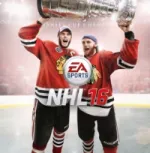Our extra-large special edition is here. Subscribe today and receive the 25% longer issue at no extra cost!
NHL 16

Coming off a console era where EA's hockey franchise was one of the sports games most pushing innovation, the NHL series suffered a broken skate on its first shift with new-gen consoles, shipping a product that lacked many features still found in the old-gen games. After getting crosschecked into the boards by reviewers and customers alike, EA Canada is shaking off the woozy effects and jumping back on the ice, hoping the second shift ends with more fanfare. This is what we've learned about the game thus far.
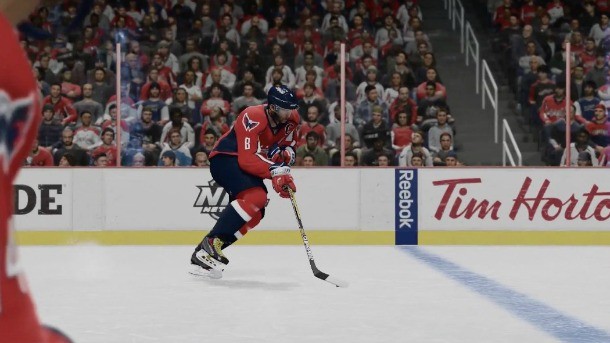
GAMEPLAY
- To help newcomers who don't know a slapshot from a wrist shot, EA has developed a new in-game tutorial system. As you play, an overhead marker will give you tips about when is the right time to pass, shoot, check, etc.
- In our experience the suggestions can be confusing. For instance, a bubble may appear over your skater's head telling you to shoot when you're not in an ideal shooting position. You're supposed to wait for the shoot icon to light up before firing the puck.
- When experienced players take the ice the tutorial system will adjust accordingly and instead offer tips on advanced moves like deking or where to put the puck when shooting to increase your odds of scoring.
- If you find the tutorial icons distracting, you can turn them off completely.
- EA is touting the new precision skating controls as the biggest enhancement to gameplay. Precision skating allows you to control which direction you're facing and how you can move point to point in a very concise manner in small spaces. In the past, if you wanted to go four feet over, you'd press over and the player would kind of float over and not necessarily stop where you wanted him. You now have the ability to do those small crossover steps – moving forward, moving back, getting in open position and standing there to wait for a pass. EA says this should help you move around the zone better and set up one-timers.
- On defense, the precision skating should help make subtle positional moves like going from protecting on the right side of the net to protecting the left side. If a guy is on the half boards with the puck you don't necessarily have to float one way and hope he moves there. Instead, you can just move left and right to stay in passing lanes.
- The improved skating was especially noticed when the A.I. takes control of the puck. The CPU is much better at protecting the puck. EA says the goalies are aware of the direction a player is facing and will face up the player properly.
- From our limited hands-on time shooting and goaltending felt largely the same. The same scoring tactics from last year – wraparounds, screens, high slot shots – all seemed to still work.
- New puck pickups allow you to gather the puck better while on the move, which EA says should improve the flow of the transition game.
- EA is promising more finite control in the net for user-controlled goalies.
- Board play, face-offs, and passing feel largely the same as NHL 15. Fight frequency and checking seemed toned down compared to last year. The collision animations also appear to be cleaned up.
- EA says it has tweaked player awareness so they are better at using a skate to stay onside during a rush.
- Player ratings are still sky high, which gives the game very little in terms of player differentiation.
- The NHL series is notorious for a serious lack of roster updates during the season. EA says this is because of the large number of players on its various rosters and that it's "currently assessing the feasibility of more frequent roster updates."
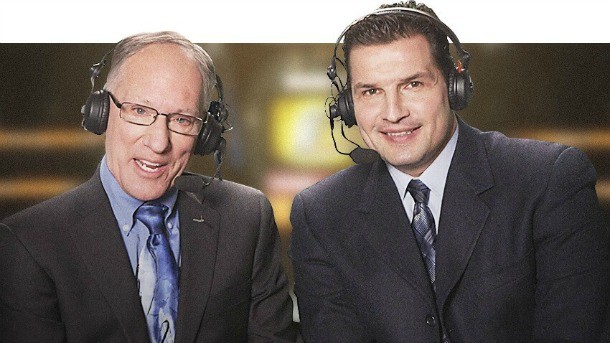
PRESENTATION
- NHL 15 lacked facial scans for the vast majority of players, which is something EA hopes to pick away at with each new game. "We did do more facial scans this year – we've built more heads," says producer Andy Agostino. "It's a struggle with the size of the league to get so many heads scanned, but we are always continuing to work on that. We are adding more heads and trying to build up that library so you see more NHLers with their heads in the game."
- With NHL 16 EA is emphasizing authentic in-arena experiences by adding mascots, team-specfic chants, and signature elements like the canon in Columbus, Tesla coil in Tampa Bay, and light house in Minnesota.
- For the second year Doc Emrick and Eddie Olczyk are behind the mics, EA is emphasizing Doc's signature enthusiasm. Doc recorded several new lines to get his voice to rise and fall with the action.
- EA also spent time working storylines into the broadcast so the booth team better commentates on recent team performance and player streaks.
- One of the finest traditions in sports is getting recognized in NHL 16 – playoff beards. As the Stanley Cup tournament carries on, players' beards will continue to grow. Check our six playoff beards we hope to see in the game here.
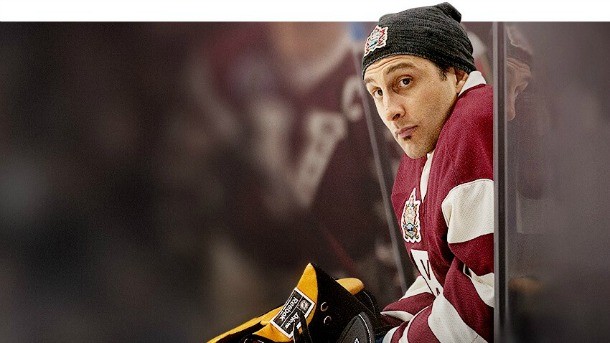
BE A GM
- The big addition to Be A GM this year is the player morale system like those found in NBA 2K. Each player is given a baseline personality that governs how they interact with the GM and other players. The goal isn't to mimic the attitude and intentions of a player in real life, but rather to have them react to your decisions and their teammates. A veteran may be loyal to the team above all and likes to win, whereas a younger player may be all about himself.
- Morale can be affected by your lineup decisions. For instance, if as the GM of the Vancouver Canucks you traded for Jason Spezza and made him the first line center and moved Henrik Sedin to third line because you like Horvak on the second line, Sedin would have his morale deteriorate because he thinks he's a first line player and deserves more ice time.
- Disgruntled players may request a face-to-face meeting. During these conversations you have several options in how to respond to their concerns. If you act on their discontent their morale may improve. If you are wishy-washy their morale may continue to slowly deteriorate. If you reject their premise outright they may eventually request to be traded.
- Bad morale affects a player's rating just like in the NBA 2K games. This means you won't be getting full value in return when you ship off an angry player.
- Each player has interactions with other players too. Certain guys interact with each other better than others, and players will develop cliques and even have best friends. For instance, the Sedin twins are best friends. If they become friends with Higgins and some other Canucks, it will list their preferred teammates.
- Player relationships carry over in free agency and trades. If you reunite good friends their morale goes up.
- Your players will notice if you drastically shake up a team's core. If you make a series of trades during a rebuilding year it may not effect the morale as much since team attitude is already bad. If your team is winning and you make a series of questionable moves, however, it could cause the team morale to plummet.
- The player card allows you to see which players they have most connection to locker room. A happy face in locker room chemistry means they don't provide much. Green ones provide a lot to the room.
- After being traded a player's morale isn't automatically fixed, but it can go back up. Some players will adjust faster than others. Background ratings determine loyalty (free agency discount), adapter (morale resets quickly)
- You can conduct team meeting to gauge the temperature of the team. Immediately after the stand-up meeting, you get a report that tells you who reacted well and who reacted poorly to your message. As you work with a player or do team meetings, you can tell which ones fit your management style.
- Simming through games is much speedier this year. Sim intervention also returns so you can step in to change the outcome of a game you started simming.
- Last year EA inexplicably automated the player entry draft, meaning all that time you spent scouting the eligible players was for naught. This year the draft is back.
- The fantasy draft also returns, allowing you to change up the rosters before starting your GM career.
- EA says no changes are being made to player scouting. The development team wanted to focus on player morale this year instead, but it does have plans to address scouting in the coming years.
- This year you can play your AHL team's schedule in addition to the NHL games as in the past generation.
- Trade logic is being tuned to better understand the values of players and what teams are asking for certain players. EA is trying to make it so teams know what they are attempting to accomplish by end of the year, whether the team is a Stanley Cup contender or in a rebuilding mode.
- Midseason contract negotiations are once again not in the game. EA says the player morale system will set them up for a way to potentially build up to this in future games.
- The season hub is largely the same, but EA is doing some things that help you get to hot spots in the menus more quickly. Player morale issues may surface in the Twitter feed as well to let you know when a player may be going to the trade block.
- Progression and regression are being tuned to better mimic how NHL players develop and fall off. EA is using statistical analysis to chart how fast players are going from juniors or Europe when they are 18 to the NHL. From here they revise their curves to get the right amount of players to be first-year wonders and the right amount of guys to join when they turn 22 after playing a couple years in the minors. Their goal is to have some guys hit, and some might be 23 years old before they develop. Some may have long careers like Nicklas Lidstrom, and some might deteriorate.
- Connected GM is shelved for the year. EA hopes to take a step back, refocus, and find a better way to do it.
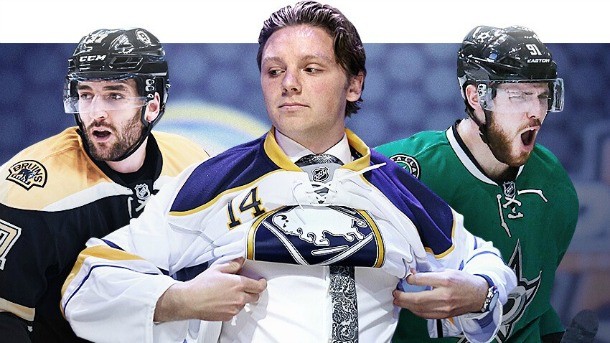
BE A PRO
- A late addition last year, coach grades return to Be A Pro in NHL 16, though they remain largely the same.
- One of the biggest failings of Be A Pro last year was the curious omission of being able to sim to your next shift. This meant if you took a five-minute major for fighting you had to sit in the box twiddling your thumbs and watching the painful A.I. players pass around the boards. EA mercifully has added sim to next shift back this year.
- EA is tweaking the sim-to-next-shift feature to better reflect the ice time allotment relative to your position on the roster. If you are playing on the third line you're only going to get 12 to 15 minutes a game instead of the absurd 20-plus minutes you could rack up last year.
- If you want to start in the CHL, build up some draft hype, and then work your way into the NHL like in the last-gen games, you have that option this year.
- The biggest change coming to Be A Pro is a new performance-based experience system. Whatever you do on the ice will earn you experience in that facet of the game, so if you poke check a lot, shot blocks, scores goals, or use a lot of wrist shots, your player will improve his or her skills in that area. If you focus on one thing too much you run the risk of becoming a one-dimensional player. That could cause some issues when it comes to getting your overall coaching feedback score to the level that you need to move up in the NHL or up lines.
- Every week (depending on how many games you are playing) you are allotted a specific number of hours per week that you can use to perform drills that increase your skills like speed, agility, and awareness that don't have one-to-one analogs to the stats the game tracks on the ice. Your coach assigns one drill per week he wants you to work on, and from there you can fill in the rest of the time.
- Last year it was hard to crack the special teams units even if you were the team's highest scorer or boasted an excellent plus/minus rating. For NHL 16, EA is tweaking the skill thresholds you need to hit to earn time on the penalty kill and power play.
- The player morale system being introduced in Be A GM does not play a role in Be A Pro this year. "It's one of those things that as we developed we've seen it has a lot of far-reaching avenues it could move forward with," Agostino says. "We think of it as the first layer moving forward and we've also talked about it potentially moving to Be A Pro in the future. It just might need to be looked at how that integration works, because unlike Be A GM where everything you do as a GM affects your locker room, you're one person reacting to the GM so we'll need to figure out how that might work. We said, 'Let's make it a Be A GM feature and then for Be A Pro it's something we'll potentially look at in the future.'"
- Users have about the same number of skates and sticks to choose from as last year, but EA is adding other customization options to make your player feel more unique. These include skate guards, tape color, and choosing what type of tape job you prefer. If you want to rock the Phil Kessel candy cane look all the way up the stick shaft you can.
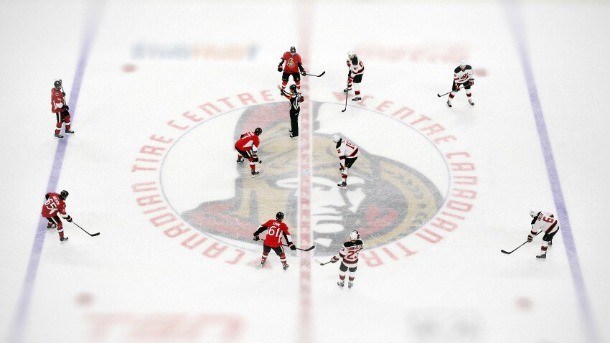
EASHL
- The popular EA Sports Hockey League returns with most of the same core functionality as the last generation.
- You can play full 6v6 matches, but if you can't recruit enough skaters to field a full team you can still fill out your lineup with A.I. replacement players.
- You can still name your player and customize his look, but EA has retired player progression. This is largely due to users exploiting the system to create seven foot tall danglers who couldn't get knocked off the puck and the vast delta between newcomers and the longtime players who had fully maxed characters with boost enhancements to boot.
- To rectify these shortcomings, EA is introducing character classes built around certain play styles – playmakers, danglers, grinders, power forwards, defensive defensemen, offensive defensemen, etc.
- Each class has strengths and weaknesses, and team strategy should come into play when selecting players. EA hopes this more equal playing field will result in more competitive matches.
- If one particular player style ends up being too overpowered, EA will tune accordingly.
- The mode organization is largely the same as last generation. As teams perform well, they will rise up to more competitive divisions.
- Teams can still select their team name and one of the many jerseys in the game. NHL 16 does not support customizable jerseys.
- EA is working long-time team names into the audio to recognize their important role in making the EASHL a destination mode.
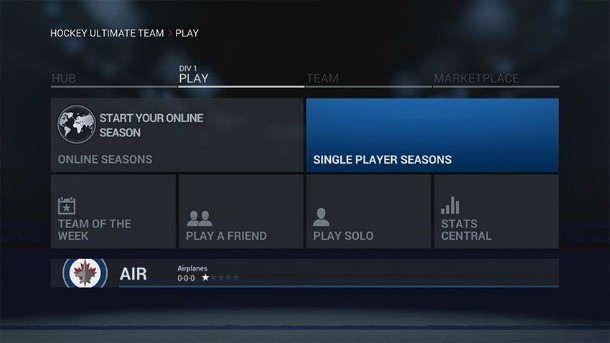
HOCKEY ULTIMATE TEAM
- EA isn't planning any major changes to cards or auctions.
- The big new addition to HUT this year is offline seasons, which allow players to compete against CPU teams and move up divisions as they get better.
- EA says there is no crossover between offline and online HUT ladders. Even if you've made it to division five offline, you will still begin in division 10 online when starting out.

Get the Game Informer Print Edition!
Explore your favorite games in premium print format, delivered to your door.
- 10 issues per year
- Only $4.80 per issue
- Full digital magazine archive access
- Since 1991
